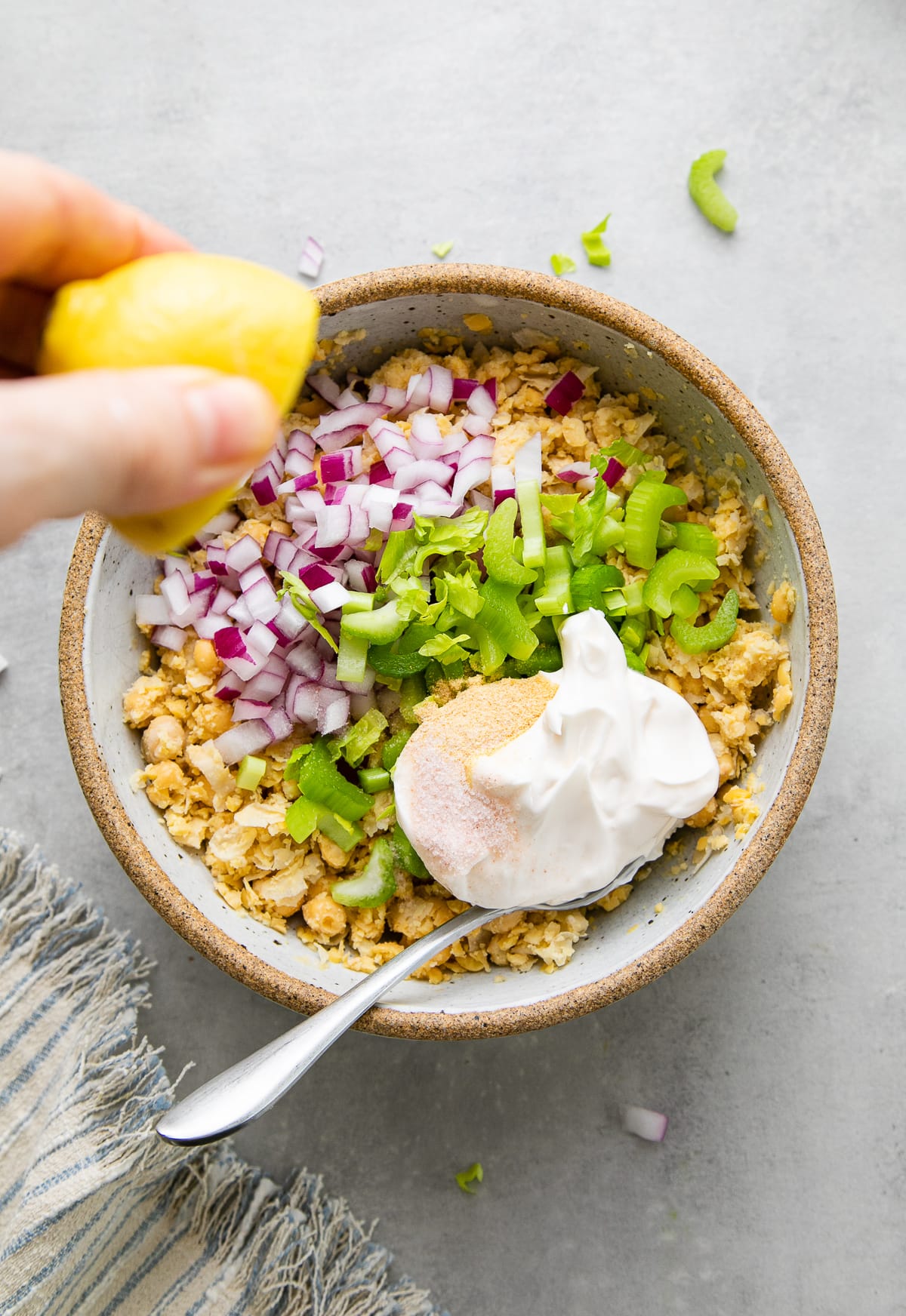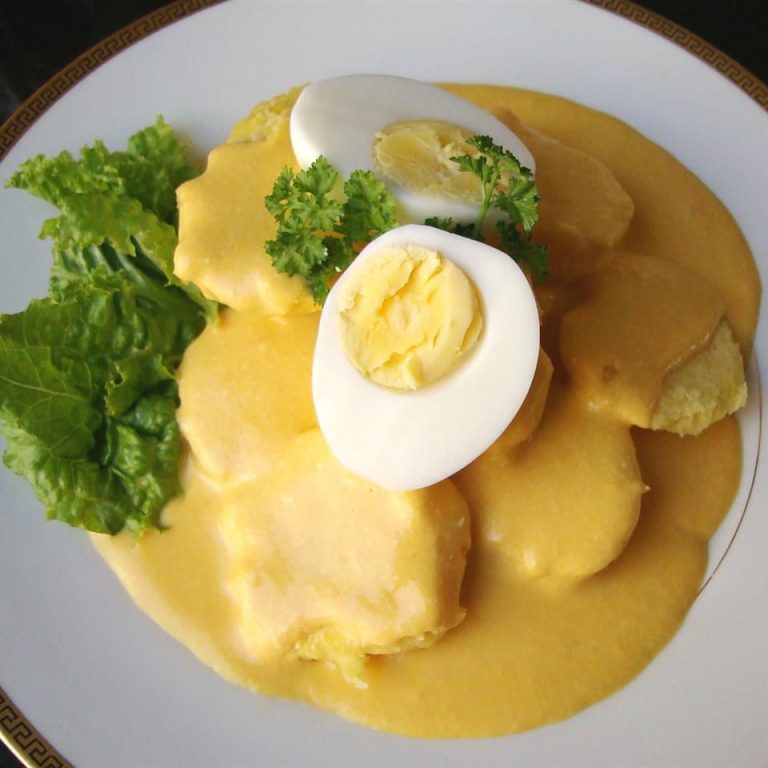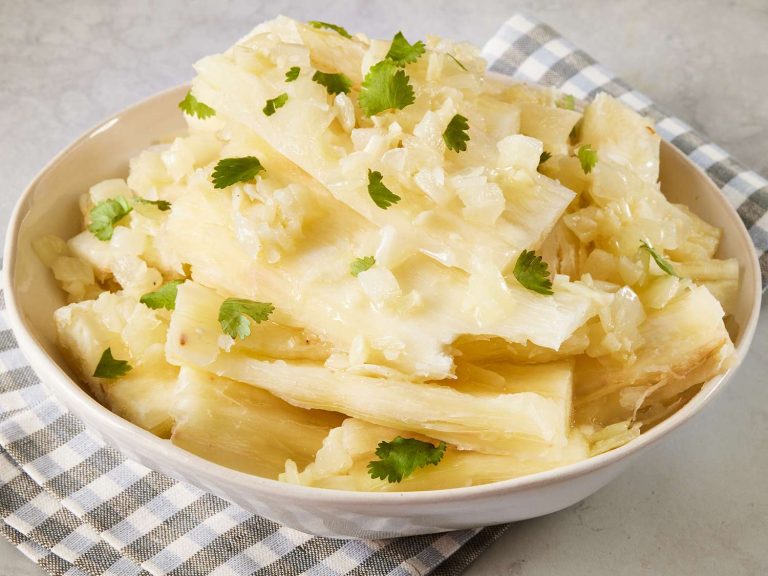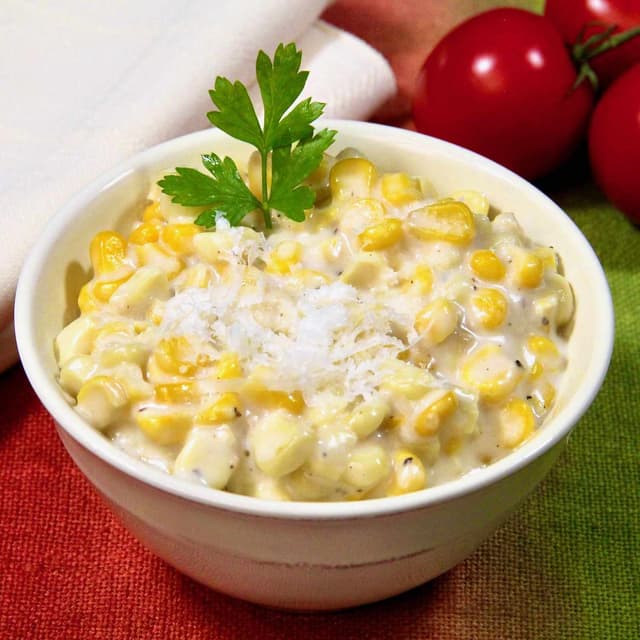Mock Tuna Salad Recipe: A Delicious, Healthy & Sustainable Plant-Based Alternative
Mock tuna salad features a variety of plant-based ingredients, making it a versatile dish. Chickpeas often form the base, giving the salad its texture and protein content. Alongside chickpeas, other common ingredients include:
- Nori Sheets: Impart a sea-like flavor similar to traditional tuna.
- Vegan Mayonnaise: Adds creaminess without using eggs.
- Celery: Provides crunch and freshness.
- Red Onion: Enhances flavor with a mild, spicy taste.
- Dijon Mustard: Offers a tangy kick.
- Lemon Juice: Brightens the overall taste.
- Salt and Pepper: Essential for seasoning.
These ingredients mimic tuna salad’s taste and texture while maintaining a plant-based profile.
The Appeal of Plant-Based Alternatives
Plant-based alternatives appeal for various compelling reasons. First, they cater to vegans and vegetarians, expanding dietary options. Second, they often provide health benefits, like lower cholesterol levels and reduced risk of heart disease, due to the absence of animal fats. Third, these alternatives support environmental sustainability by reducing reliance on overfished species and lowering greenhouse gas emissions associated with meat production.
People seek mock tuna salad for its flavorful, satisfying qualities without compromising ethics or health.
Health Benefits of Mock Tuna Salad
Nutritional Value Comparison: Mock vs. Real Tuna
Mock tuna salad offers a unique nutritional profile. Compared to real tuna, mock tuna salad, primarily made from chickpeas, provides a high protein content. Chickpeas supply essential amino acids, dietary fiber, and key minerals such as iron and magnesium. A cup of chickpeas contains about 15 grams of protein and 12 grams of fiber. Real tuna, while rich in protein (24 grams per 3.5 ounces), lacks fiber.
Furthermore, mock tuna contains healthy fats without cholesterol. Ingredients like vegan mayonnaise, often made from avocado oil or olive oil, introduce monounsaturated fats. In contrast, real tuna, although lower in total fat, contains cholesterol and can sometimes have high levels of mercury.
Allergen and Dietary Considerations
Mock tuna salad suits various dietary preferences and restrictions. For those with shellfish or seafood allergies, mock tuna provides a safe alternative. Chicpeas and other plant-based components significantly lower allergenic risks compared to seafood.
Vegans and vegetarians find mock tuna salad a fitting choice since it excludes animal products. Additionally, those following gluten-free or dairy-free diets can easily adapt the recipe to meet their needs by using gluten-free vegan mayonnaise. This makes mock tuna salad a versatile option for diverse dietary requirements.
Mock tuna salad also supports sustainable food practices, reducing the reliance on overfished marine resources. The plant-based nature of this dish aligns with ethical eating choices, considering both health and environmental impacts.
Preparing Mock Tuna Salad
Choosing the Right Ingredients
Choosing the right ingredients ensures a flavorful mock tuna salad. Primary ingredients include canned or cooked chickpeas for their protein content and texture. Use vegan mayonnaise to keep it plant-based. Add minced celery and red onion for crunch and flavor. Incorporate pickles or pickle relish for tanginess. Nutritional yeast gives a slight cheesy flavor. Include seaweed flakes for a hint of ocean taste. Season with salt, pepper, lemon juice, and garlic powder for a balanced taste profile.
Step-by-Step Preparation Guide
Follow these steps to prepare mock tuna salad:
- Mash Chickpeas: Use a fork or potato masher to mash 15 oz of chickpeas until they reach a chunky consistency.
- Add Vegetables: Mix in 1/4 cup of minced celery and 1/4 cup of minced red onion.
- Incorporate Seasonings: Stir in 2 tbsp of chopped pickles or relish, 2 tbsp of vegan mayonnaise, 1 tbsp of nutritional yeast, and 1 tbsp of seaweed flakes.
- Season and Flavor: Add salt and pepper to taste, 1 tbsp of lemon juice, and 1/2 tsp of garlic powder.
- Mix Thoroughly: Combine all ingredients until evenly distributed. Ensure the mixture has a consistent texture.
- Chill: Refrigerate for at least 30 minutes to let flavors meld.
Your mock tuna salad is ready to serve, and it pairs well with crackers, in sandwiches, or on a bed of greens.
Creative Ways to Serve Mock Tuna Salad
Sandwiches and Wraps
Use whole-grain bread, tortillas, or pita pockets to create satisfying sandwiches and wraps. Spread the mock tuna salad evenly on your chosen bread, then add fresh vegetables such as lettuce, tomato slices, and cucumber for extra crunch. Opt for gluten-free bread or wraps if necessary. For a different flavor, include avocado slices or pickles. This form makes an ideal on-the-go meal for lunch at work or school.
Salad Bowls and Appetizers
Serve mock tuna salad on a bed of mixed greens, adding cherry tomatoes, shredded carrots, and sliced bell peppers for a vibrant salad bowl. Enhance the dish with toppings like sunflower seeds, olives, or a sprinkle of nutritional yeast for added flavor and nutrients. For appetizers, present mock tuna salad on cucumber slices, bell pepper strips, or whole-grain crackers, creating bite-sized servings perfect for parties or gatherings.
Conclusion
Mock tuna salad offers a delicious and nutritious alternative to traditional tuna salad. It’s not only packed with protein and fiber but also free from cholesterol, making it a heart-healthy option. This versatile dish can be tailored to suit various dietary needs and preferences. Whether you’re serving it in sandwiches, wraps, or as party appetizers, mock tuna salad is sure to impress with its flavor and texture. By incorporating this plant-based option into your meals, you’re making a sustainable choice that’s good for both your health and the environment.






